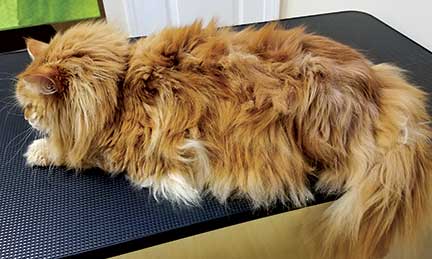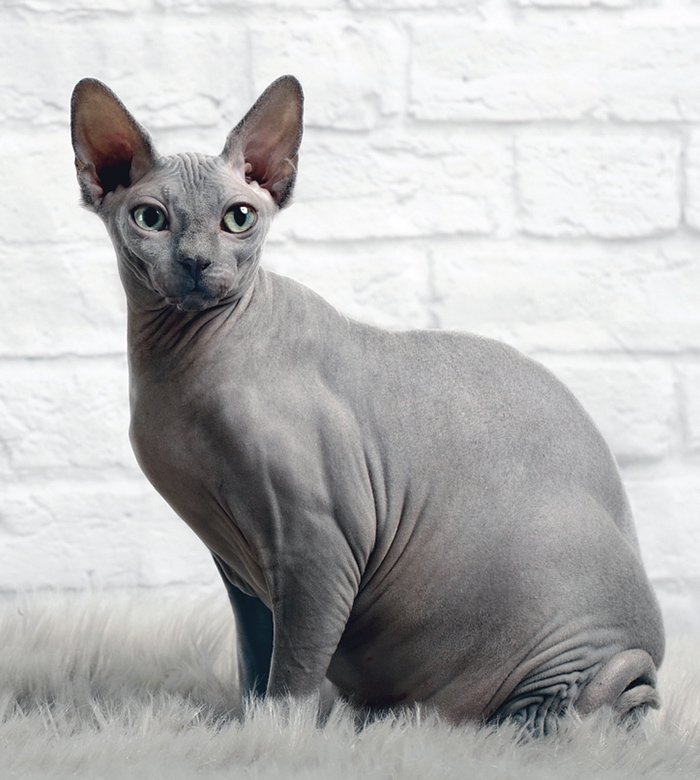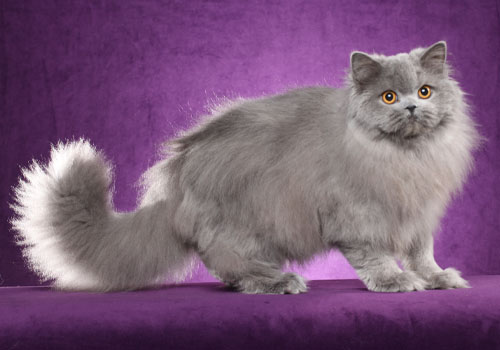What do you like about your cat? Chances are that you were blown over by its distinctive coat.
Well, it takes some hair to make a fine gleaming cat coat. And the amount of hair in your cat is a good indicator of your cat’s health.
Not all animals come with the same hair count. For example, for each square centimeter of their body surface, otters can have up to 80,000 fur hairs. This makes them the hairiest animal.
On the other end of the spectrum, whales have practically nil hair.
What about our feline friends? How many hairs are on a cat? We investigate…
What Determines Hair Numbers In Cats

Of course, your cat won’t have the same amount of hair every time. That’s because several factors impact how much hair your cat has at any particular time:
1. Hair Shedding and Regrowth
Your cat is naturally undergoing hair growth and shedding normally. This happens in cycles so that hair numbers are increased and decreased at different times.
During the first stage called anagen, your cat grows new hair. This reaches its maximum in the second stage called catagen when no more hair is added.
Following this is the telogen phase when hair starts falling out to prepare the way for a new hair regrowth.
2. Cat’s Grooming Behavior
Grooming actions by the cat can directly affect the amount of hair it has.
Cats have unusual tongues that are lined with tiny hook-like growths, giving them the structure of sandpapers.
When they lick their body, this can pick off hair. Over-grooming by cats can lead to a significant reduction of hair including bald patches on its body.
3. Cat’s Diet
A healthy diet that is rich in important nutrients can ensure your cat has normal hair growth and prevents hair loss.
For example, your cat’s protein intake is very important as 30% of it goes into maintaining its skin and fur.
It is keratin, a protein substance, which the cat turns into hair. Keratin helps to make hair tough.
So, when protein is lacking in the diet, the cat loses hair due to hair thinning and breakage.
4. Disease
Some diseases which affect the hair follicles can lead to hair loss and reduced hair count.
Follicles are tiny tunnel-like structures on the skin’s outer layer or epidermis. It is through them that hair grows and receives nourishment.
Fungal infections like ringworms can attack the follicles leading to hair loss. This is usually identified by a scaly ring that has missing hair in the middle.
An immune system problem or disease (such as diabetes, cancer, or an overacting thyroid gland) can also cause hair loss.
5. Parasites and Allergies
Your cat’s hair numbers can also be affected by parasites like lice, fleas, or ticks. This makes the cat itch so that it scratches and licks, leading to bald spots and sores
Cats can also be allergic to dust, pollen, medicines, insect bites or food which can also lead to scratching and licking, resulting in hair loss.
Related Post: Home Treatment for Cat Hair Loss—10 Effective Strategies
Most Hairy Vs Least Hairy Cats

When it comes to hair numbers, not all cats are created equal. Some cat breeds have naturally more hairy than others.
The Siberian cat, for example, has some of the thickest hair among cats.
On the other end of the other spectrum, the Sphinx cats are almost completely bald.
Though hairlessness may require extra care, it may enhance the cat’s beauty and appeal to some cat owners.
These differences in hair numbers or density are caused by genetic factors. For example, hairlessness in Sphynx cats is caused by a gene mutation that leads to a weak keratin structure in the forming hair. Therefore, the hair easily breaks down and is removed.
Calculating Hair Numbers in Cats

Apart from the reasons we have seen above, hair count will vary depending on factors like the size of the cat and specific body spots.
For example, you will find more hair on the cat’s underside than on its back. Therefore, we can find the hair amount for a standard or average cat using average numbers.
If we take an estimated number of 25,000 hairs strands for each squared centimeters area in a cat, we can then use a weight-to-BSA conversion chart from MSD Manual Veterinary Website to find the cat’s surface area.
BSA stands for body surface area. The charts give us pre-calculated figures for a cat’s body surface area given the cat’s weight.
Domestic cats weigh roughly from 3 kg to 4.5 kg. According to the chart, the BSA conversions for 3 kg and 4.5 kg give us the following:
- 3kg ⇾ 0.208 m²
- 4.5kg ⇾ 0.273 m²
We can calculate the total hair for each of these weights as follows:
1. 3 kg
25,000 x 0.208 m² x 10,000 = 52,000,000
*we multiply by 10,000 to give 0.208 m² in terms of cm² since 25,000 gives the hair number per cm²
2. 4.5 kg
25,000 x 0.273 m² x 10,000 =68,250,000
So, the number of hairs in cats can be estimated to fall in the range of between 52,000,000 and 68,250,000 for a standard-sized adult cat.
Conclusion
From playful lap monster to lean hunter, there are tons of sweet reasons why cats are the best pet you can own.
The variety in coat hair thickness just adds to the cuteness mix, with cat owners being spoilt for choice between gorgeous fluffy all the way to an adorable bald.

Hi! I am Eleanor Price. I started this website after my cat, Louie, almost died from a case of botulism (a type of food poisoning often caused by bacteria that grow on food items). Turned out that my cat’s diet was the problem. I have made it my duty to provide the best information and recommendations about everything cat lovers need to know about their felines’ health and wellbeing. My goal is to find the most informative content on anything feline-related and share it with fellow hardworking kitty lovers.

